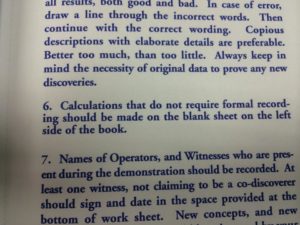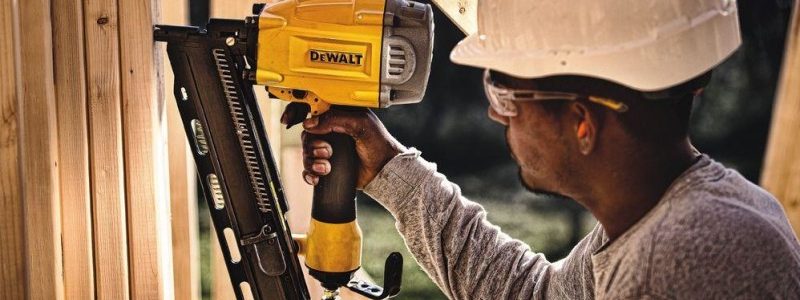How often do you discover that something you thought you knew about yourself was wrong?
I’m not talking about family secrets that suddenly surface years later when you’re an adult and sitting around the table talking with your favorite Uncle. This isn’t a let’s lay down on the couch and have a series of conversations moment but there certainly are some unconscious elements to the “stranger within” that drive our personal behaviors. No, the question here relates to behaviors and rationales for the actions you take in life, the way you do things, and perhaps your favorite activities or hobbies. Do you know why you always turn on the stereo before you put your seat belt on? Do you know why you prefer Jif peanut butter to Skippy? Do you think about why you always sit on the far right side of a classroom or meeting room, closest to the door?
Recently I discovered something fundamental about an action I take on almost a daily basis and have done so for twenty plus years was based on a different rationale than I have explained to myself and to colleagues who have queried me about it.
Let me first explain that I am a note taker, a scrivener, a scribe as it were, though writing as a journalist is certainly not my profession. It’s possible that I was a stenographer in a previous life. As a result I have an extensive collection of professional (paper) notebooks that date back to my college days. These aren’t personal journals though I do sporadically keep one. No, these are the insights, deliberations and decisions made in daily meetings captured in extensive detail. Sitting on a shelf in the office I think there must be at least 40 of these notebooks. And in general these are not 80 page half size Moleskines but 8.5″ x 11″ quad ruled 140 page composition notebooks. So yes, some of you, the designers especially, are nodding your heads, and like me as a serious fanatic of notebooks, may get kind of dreamy eyed when terms like acid free and 90 lb gsm roll through your heads and you think about the feel of the pen scrolling new thoughts across the page. It’s true that I am also a touch typist with sufficient speed and concentration that I can capture practically word for word what is said in a meeting or conversation without detracting from the discussion – this is an extremely useful skill when you’re facilitating an interview – but there is greater enjoyment for me personally when those notes are taken on paper.
Suffice it to say that for my entire career I have maintained deeply detailed notebooks largely for work. Said notebooks once featured extensively in discovery and a 3 day deposition that surrounded arbitration over the earn-out for InstallShield’s acquisition by Macrovision. They say that he who captures his activities in writing leaves a record for posterity but it also creates a highly useful tool for discovery by hawkish attorneys.
I’ve long preferred graph paper in bound composition notebooks that fit in a leather sleeve. But most importantly, I have always only written on the right hand page and the left page was reserved for identifying action items or doodles.
Here’s where the discovery happened. Recently, as I opened up a fresh ITW lab notebook, reserved for recording tests and results (for patent purposes) I noticed the instructions page. Now, I have not used an R&D notebook since my last internship at the IV Systems labs at Baxter in 1993.
But as I read the instructions it all came back that “the left hand page is to be used for calculations that do not require formal recording.” I always thought I left that side blank because I write with my left hand and this would mean fewer smears from wet ink. But instead this habit carried over from a requirement for note capture that definitely started in 1991. Avoiding smearing was a discovered additional benefit that eventually overtook the original rationale in my mind.

The engineers reading are all nodding their heads and reflecting back on their first exposure to this practice in the lab with courses like MIT’s 2.671 Measurement and Instrumentation. How could you forget what was drilled into your heads from day one that “keeping a complete and accurate record of experimental methods and data is vital part of science and engineering.” Well captured notes ensure the ability to replicate results and more importantly prove ownership of intellectual property.
Why does this matter?
Because this post isn’t really about me, or notebooks but about understanding customer motivations. It comes down to whether or not you trust what your customers tell you when you want to understand why they do what they do. A core part of innovation is figuring out the job that a customer needs done, the solutions they hire to do that job, and the work arounds they create due to imperfect products. Every consumer insights specialist or market researcher knows that this leads directly to focus groups and one on one interviews, the grunt work of qualitative research. But sitting down in a conference room or behind the glass wall is still an incomplete effort and no matter how brilliant the interview guide questions nor how creative the facilitator, you are still going to miss very critical insights that could mean life or death for your product.
You need to spend more time in the field, on the production line, in the home of the consumer, in the kitchen with the chef or under the car with the mechanic if you really want to understand the work they do. Immersion means getting your hands dirty and developing a fundamental view of the essence of the problem space. This is where so many new product development efforts fail. Teams spend way too much time staring at columns of data and debating their personal views of the mindset of the customer based on anecdotal insights they’ve gathered through sales calls. The richness of your customer persona and how it incorporates the environment in which they operate will directly correlate to the eventual resonance your solution has in the marketplace.
Let me offer a couple of examples to better illustrate the benefits:
A manufacturer of power tools was working on their next generation nail gun and the common factors for improvement were under consideration: increase the power, reduce the weight and expand the nail capacity. But this team has developed the focus of not just handing the tools to carpenters to get their feedback in a laboratory. They also spent long hours on the construction site taking photos and watching to see how the nail guns are used. One photo brought back a clear message to their development team as they observed a carpenter assembling walls with a nail gun in one hand and a hammer in the other. Ask yourself, why does a carpenter need a hammer if he has a pneumatic nail gun? There could be a number of answers to that question. This single insight would take the team down multiple paths of successful development as they explored the deeper questions that surfaced.

In the early days of Pringles the manufacturer was struggling with how to get a proper flavor into their chip due to the output from the factory line. The food engineer given responsibility for solving this problem told me he knew immediately what the issue was as he drove down the road toward the factory. The smell of boiled potatoes rising from the steam out of the exhaust pipes explained the loss of flavor. It helps to understand that Pringles were one of the first dough based potato chips where the potatoes aren’t sliced thinly and fried in oil but instead boiled, mashed, dried and then formed from a mixture of potato flakes and water.

But here’s where the insight took off. This engineer and his team realized that since they were introducing a potato flavor back into the chip they could just as easily use the bland chip as a foundation for all kinds of new test flavors. Today there are well over a 100 different flavors globally of what is a Billion dollar snack.
I share two different examples to demonstrate that external, and internal customers deserve similar treatment as you attempt to find solutions for them. Site visits bring a far more substantial set of insights because often the customer doesn’t even think about the work arounds they have put in place. And if you asked them to tell you how they do their job they quite likely would not mention the additional steps.
This calls to mind my favorite chocolate chip cookie recipe which I happily share with anyone who asks. The problem I found much later was that friends could not replicate my results. Only when one friend asked to help me make cookies and learn the steps taken did I stop to think about how I beat the dough with a fork and not an egg beater, or how I use room temperature margarine and eggs or especially how I pop the dough into the freezer to let it firm before baking. My recipe card reflects none of these steps nor does it mention preferences in specific types of flour and margarine.
In the end, the outcome you seek is entirely dependent on the questions you ask and more importantly the manner in which you go about discovering the problems your customers are trying to solve. There’s a reason why they’re called unarticulated needs.
